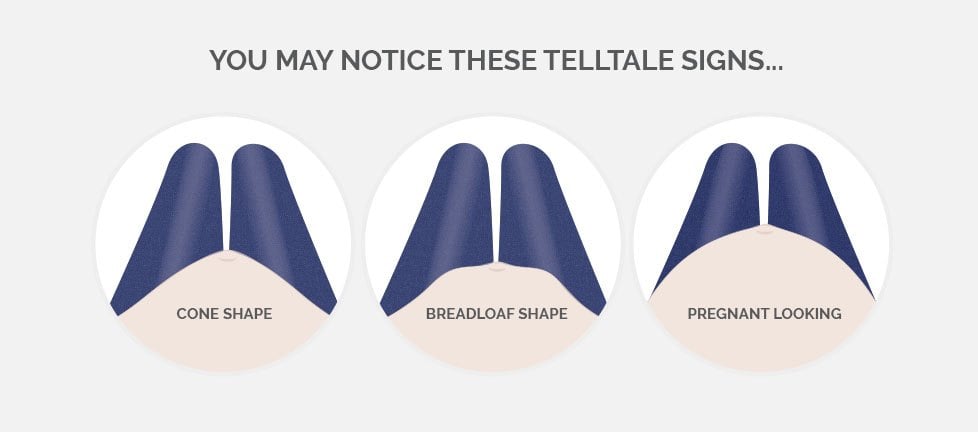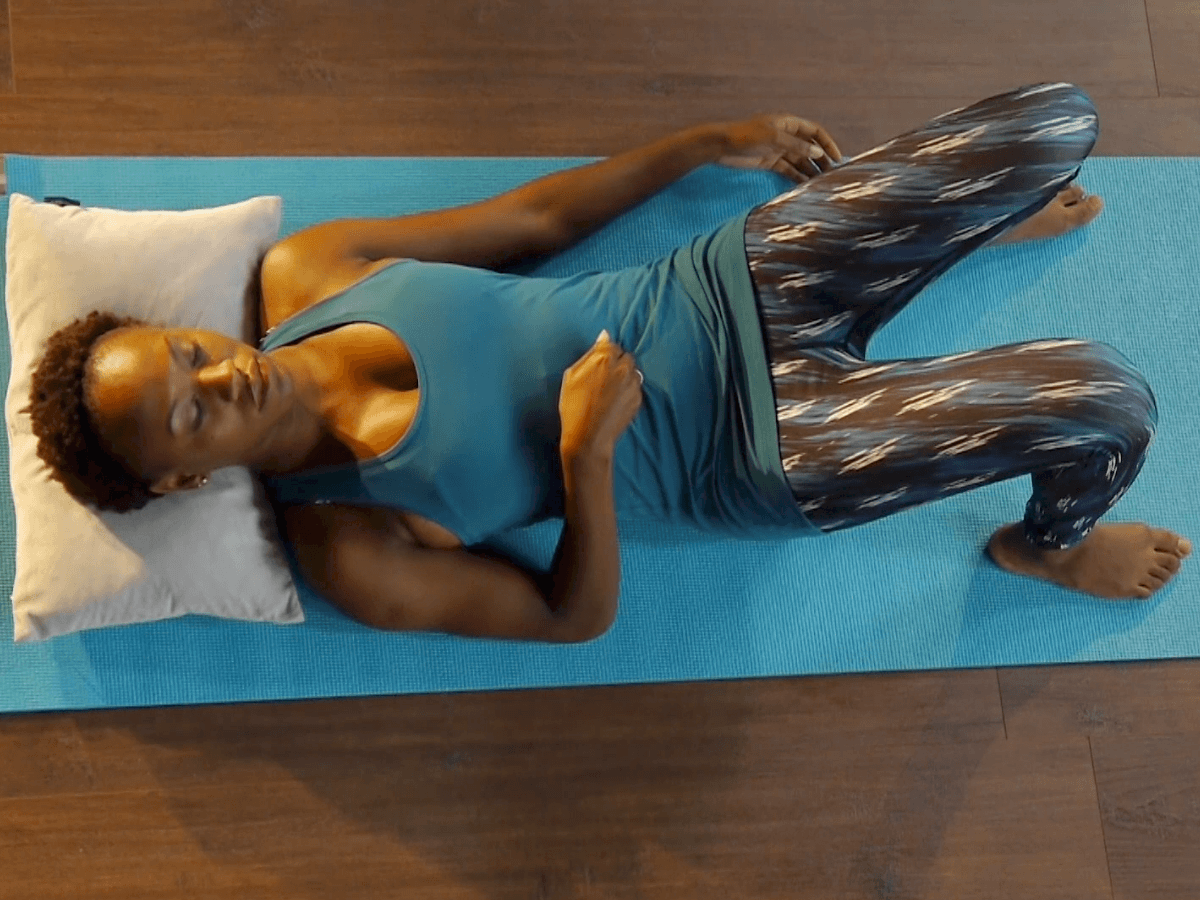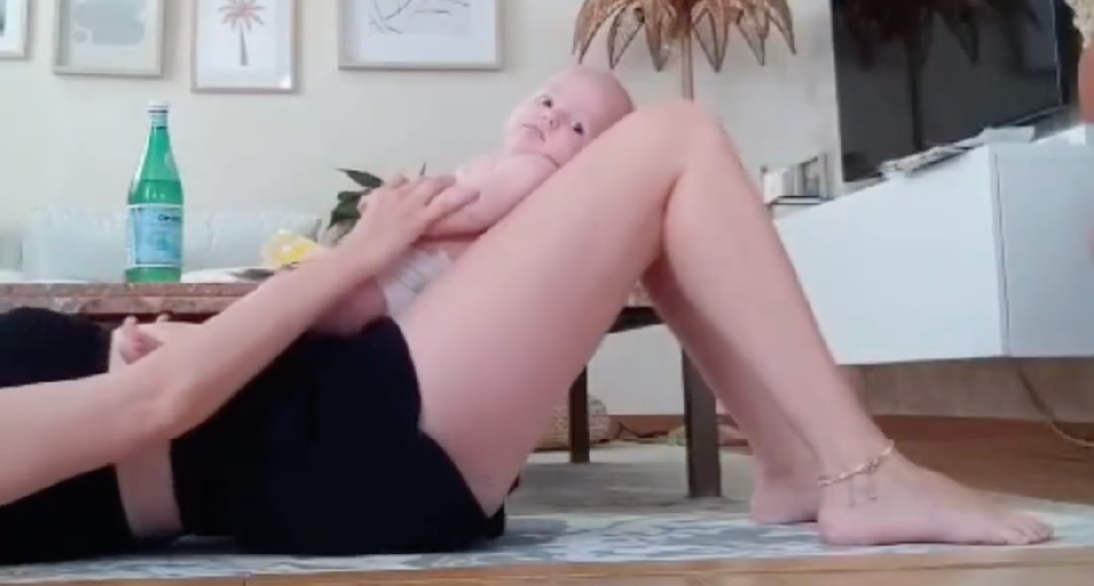Checking yourself for diastasis recti symptoms, or abdominal separation, is easy to do at home following this simple guide.
When testing for diastasis recti symptoms you are assessing not only the width of the gap, but also the depth or ‘squidgy-ness’. Both these measures, along with other symptoms or feelings to watch for, will determine the severity of your diastasis, and what you can do.
How to check for diastasis recti
Follow these simple instructions to test for common symptoms of diastasis recti:
- Lie on your back with your knees bent and feet flat on the floor.
- You need to be fully relaxed and comfortable so that no muscles are straining or contracting, especially your neck, shoulders or abs – rest your head on a pillow or yoga block.
- Place three fingertips, palm facing you, just higher than your belly button at the midline.
- Press down gently but firmly with your fingertips, once above the belly button, and then just below, towards the pubic line. This gives you an indication of the integrity of the connective tissue with the muscles at rest. Do you fingers sink in? Is there resistance to the pressure?
- Now repeat the test, whilst lifting your shoulders just off the floor. You only raise your head and shoulders about an inch, exhaling as you lift. Once above the belly button, once below. Between each, lower your head, relax and inhale.
What you’re feeling for and measuring
You will feel the two sides of the rectus muscle closing in around your fingers as you lift. Only hold the position for a second or two. You may need to try 2 fingers, or 4 or more, to feel the two sides and measure the gap.
You’re also feeling for the depth or squidgy-ness of the midline. Do your fingers sink right in, with no resistance? Or can you feel some increased firmness against your fingertips as you raise your head and press gently in?
As well as assessing width and depth, be mindful of any tenderness or pain. A diastasis recti test shouldn’t hurt, so if there is pain, reduce how much pressure you’re applying.
Do you feel or see any bulging or doming of your abdomen when you perform the test? These can be symptoms of diastasis.
Place your other hand gently on your pelvic floor / perineum. Do you feel any bulging or feel a bearing down?

What does diastasis look like?

How diastasis symptoms might appear when you look down at your stomach when lying on your back.
Why test for diastasis recti?
The causes and symptoms of diastasis recti, as well as exercises that will help, are explained in detail in the MUTU Free Resources pages. By feeling for yourself the position and working of your muscles and the connective tissue that determine your core function and strength, you are able to understand diastasis and what you can do.
What can you do?
Check out the evidence-based diastasis recti resources on what exercises to do, what to avoid and sifting fact from fiction. The MUTU System program was trialled by 100 women in a University Hospital in 2020. 94% of participants with diastasis noticed an improvement in 3-6 weeks.
MUTU System has been medically trialled and proven to work. You’re in safe hands.












